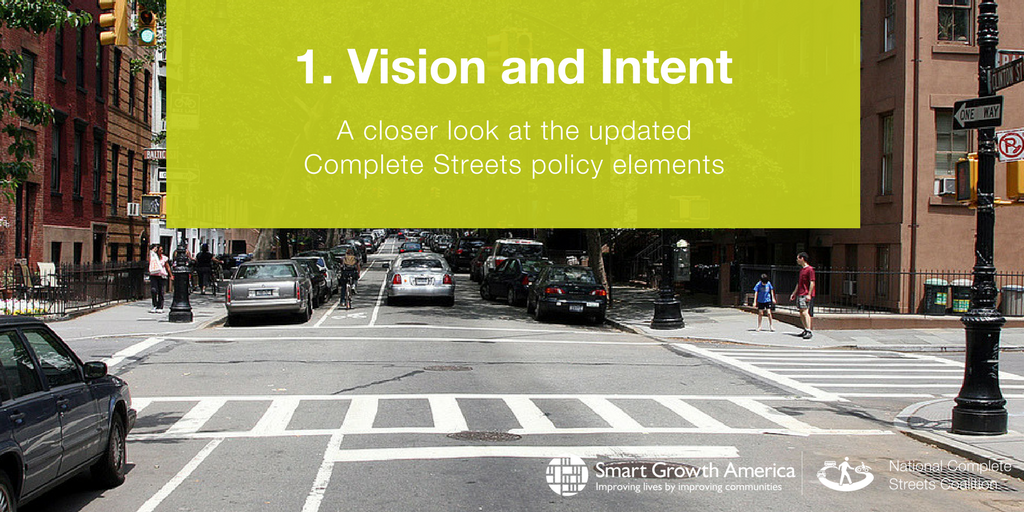
News
By Nimotalai Azeez, November 1, 2017

No two communities are identical, and no two Complete Streets policies should be exactly the same either. Vision and intent, a revised element in the updated Complete Streets policy framework, is an opportunity for jurisdictions to customize and prioritize their motivations for adopting a Complete Streets policy. The following post explores the reasoning behind this revisions, and how it can help communities better reach their most vulnerable populations.
This post is part of Complete Streets month at Smart Growth America; we will be sharing a series of blog posts that cover and explain each of the 10 revised policy elements in some detail.
So why should vision and intent be an integral part of a Complete Streets policy?
A community’s intention and commitment to using a Complete Streets approach should be clear throughout the entire policy. The vision should acknowledge how Complete Streets can help build a comprehensive transportation network that serves all community members, where people can comfortably travel to and from their destinations safely, in a reasonable amount of time, without breaking the bank. By carefully considering vision and intent, communities can better create policies that reach their most pressing, unique needs and most vulnerable populations. Equity for all people who use the streets, regardless of race, income or physical ability should be a core motivation for pursuing a Complete Streets policy.
Nearly half of all the Complete Streets policies adopted across the country are resolutions, which are non-binding statements from a jurisdiction’s legislative branch. Our new Complete Streets policy framework encourages communities to use stronger language to describe a firm commitment to Complete Streets implementation; instead of “whereas” statements, communities are encouraged to use “shall” or “must” in the body of the policy. This distinction was not included in the previous policy framework, and we believe that binding policies lead to greater Complete Streets implementation.
Emiko Atherton, Director of the National Complete Streets Coalition shared a few words on the importance of clearly stating Vision and Intent within Complete Streets policies:
Complete Streets policies work because each policy reflects a community’s own vision. While each policy calls for a commitment to diverse users and abilities, communities are able to articulate their own unique visions economic, equitable, sustainable, healthy, safe, and livable futures. The updated vision guidance also encourages communities to build transportation systems that create networks of opportunity for people to access their work, their place of worship, school, health care, friends, family, and food in whatever way the need or want to travel. And ultimately, we ask communities to make strong commitments to Complete Streets by passing a binding policy.
—
“Vision and Intent” is just one of 10 policy elements that will be featured this month. We’ve officially revised our policy grading rubric, known as the 10 Elements of a Complete Streets Policy. The Complete Streets movement has evolved since it began in 2004 to focus far more on implementation and equity, but the framework for grading the quality of policies hasn’t kept pace. For months, a group of national stakeholders, consisting of engineers, planners, researchers, and advocates, worked to revise the policy elements and truly raise the bar for what Complete Streets look like in practice. The entire revised framework will be available on our website on November 30, 2017.
Stay tuned for more Complete Streets updates during the month of November
- Have questions about the changes? Join us as we discuss how the new grading rubric will affect future policies during our webinar on December 1, 2017 at 1:00pm ET. The entire new grading rubric resource will be released on our website shortly before the webinar. Register for the webinar today >>
- We are now accepting nominations for the Best Complete Streets initiatives. Do you know of a project, initiative, event, person, task force, etc. that exemplifies Complete Streets? Fill out this brief nomination form >>
If you have any questions about the changes to the Complete Streets policy framework, please contact us! We’re happy to discuss further.
Related News

© 2025 Smart Growth America. All rights reserved
Site By3Lane Marketing












